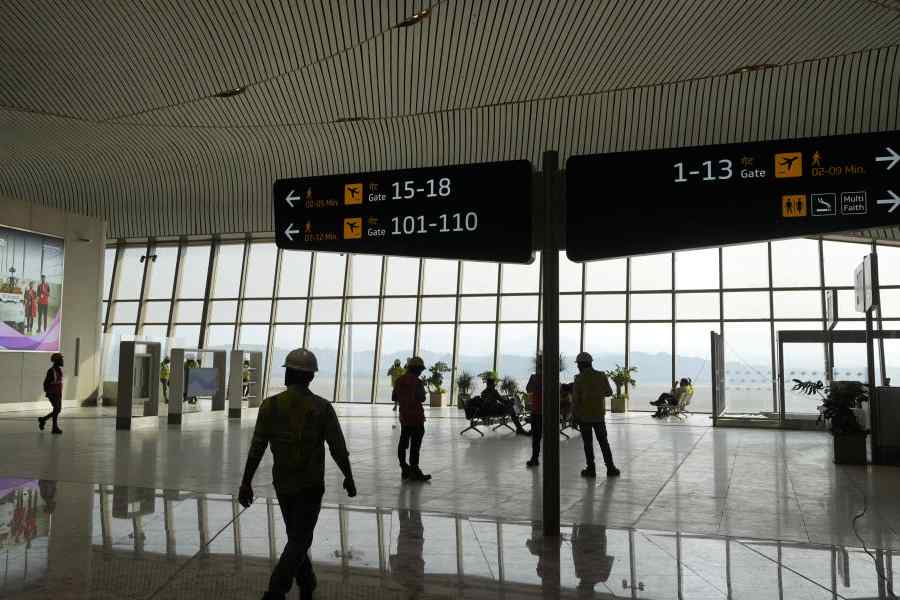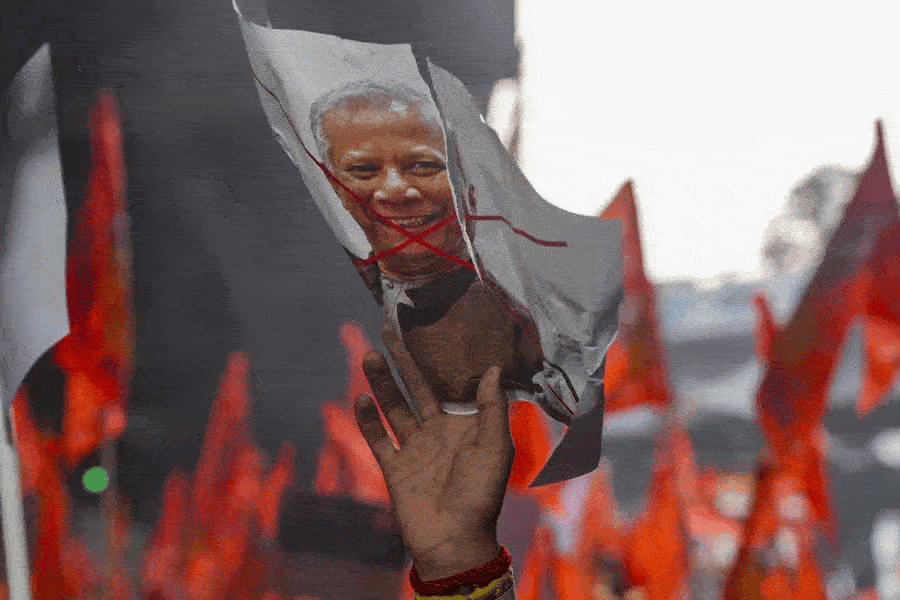 Wednesday, 24 December 2025
Wednesday, 24 December 2025
 Wednesday, 24 December 2025
Wednesday, 24 December 2025
The ongoing Israeli genocide in Gaza, which has left around 60,000 Palestinians dead – with the promise of more lives lost (or taken) by “starvation or bullets” is one of the great crises of our times.
The world has watched, with the most powerful of them either turning a deaf ear and a blind eye or, often, appearing complicit in what's happening.
We try to find out what the true and ghastly picture in Gaza today is, and what the forced starvation could do in the future.
The situation in Gaza
“When I arrived at Al Aqsa Hospital in Gaza, I was struck by what I was seeing away from what the TV cameras had shown, just seeing the impact of the complete disintegration of the healthcare system and the malnutrition that was slowly setting in,” Dr Baijayanta Mukhopadhyay, a Montreal, Canada-based family doctor, tells The Telegraph Online.
He was among the handful of physicians who reached Gaza with the support of Glia, an international medical solidarity organisation, when a total blockade was in place in Gaza in June.
Speaking from Montreal, Mukhopadhyay says that prior to the war, Gaza had a perfectly functional medical system with fairly good health outcomes on a global scale. “But we are slowly witnessing its collapse,” he says.
“The slow deterioration in people’s health conditions is something very obvious in the medical wards. This will have huge implications on the future, maybe for generations, in Gaza.”
The ongoing genocide, which has taken 60,000 lives (and counting) is now compounded by the forced starvation.
Accounts from Gaza show that Palestinians are dying every day “because of starvation or bullets”, as the Office of the United Nations High Commissioner for Human Rights has described it.
The integrated food security phase classification (IPC) experts think Gaza is in the catastrophic stage 5, which is “marked by starvation, destitution and death”.
The Bengal parallel
To understand the implications Mukhopadhyay talks about, it’s fair to draw parallels with famines of the past, like the one in Bengal in 1943, one that took an estimated three million lives.
“The parallel I think about quite a lot is going back to Amartya Sen’s argument that there has never been a famine in a functioning multi-party democracy. This is, I think, what happened in Gaza and Bengal as well,” Mukhopadhyay says.
“The economy of Gaza is completely dependent, currently and even in the past, on the whims of the Israeli armed forces. There are people making decisions that deprive people of Gaza food. And it is essentially a colonial famine.”
For many that survived the Bengal famine – mid-April 1943 through to mid-April 1944 – the memories were of begging and fighting for food every single day.
The haunting images from Gaza, of starving, sick, dying people, long queues lining up in the hope of a few grains of food, bear an eerie resemblance to the photographs we have seen of the Bengal famine. These scenes also remind of the drawings by artists like Chittaprosad Bhattacharya, Somenath Hore and Zainul Abedin, who witnessed the deaths first-hand.
In 1949, anthropologist Tarak Chandra Das wrote using a survey of destitutes in Calcutta, conducted by students and teachers of Calcutta University, “By the end of July 1943, the streets of Calcutta began to ring with the piteous cry of the people who had come to the Second City of the British Empire for a morsel of food.”
The common thread between Bengal, Gaza
The Bengal famine has been examined through various perspectives. Historian Janam Mukherjee, in his book Hungry Bengal: War, Famine and the End of Empire, discusses a mix of “less exalted” British and Indian colonial officers, who issued orders based on their own interests, significantly contributing to the economic chaos that led to the famine.
Mukherjee highlights the Bengal famine as a story of the enrichment of Indian industrialists, who actively participated in repeated campaigns of rice appropriation, leaving the countryside to starve. Mukherjee also notes that the Bengal famine witnessed the actions of hoarding middle classes, extortionary intermediaries, and a silent, complicit society indifferent to deaths year after year, each playing a role in the catastrophe.
Speaking from New York, Sucharita Kanjilal, anthropologist at Bard College, says that famines have routinely been the outcomes of ongoing colonial relations.
“When we think of these historical incidents of mass, forced starvation, you might think about the great hunger in Ireland, you could think about the one in Bengal, you could think about the ones in Gaza. The common thread is an imbalance of political power,” she tells The Telegraph Online.
“People were starving not because there wasn’t enough food. The problem is how a typically subjugated, marginalised, less powerful population is subjected to inadequate food resources," she says. “So, the agent is actually the powerful coloniser or the landlord class who own or control much of the food system.”
Implications for Gaza
What could the implications be for the people of Gaza?
Historian Sujata Mukherjee, writing on public health during the Bengal famine, highlights that women perished in large numbers not only because of famine-induced epidemics but also abandonment and destitution.
These conditions forced them to adopt survival strategies that further compromised their health. She notes, “The famine revealed the poor health status, inefficiency of public health administration, and dietary deficiencies among Indians, particularly women and children, making them extremely vulnerable.”
In Gaza, as Dr Baijayanta Mukhopadhyay points out, there is a predominantly young population, and the physical injuries sustained by many young, healthy individuals, resulting in amputations or paraplegia, will have long-term consequences.
“Research conducted across sub-Saharan Africa, Vietnam, China and India has demonstrated significant metabolic and cognitive changes in the generations following a famine,” he explains. “Particularly children born to parents who were pregnant during the famine are known to exhibit metabolic indicators of being smaller, they might perform less well on cognitive function.”
According to the United Nations Relief and Work Agency for Palestine Refugees in the Near East, 1.9 million, or 90 per cent, of the population of Gaza has been displaced. Many families have faced displacement repeatedly, and the effects of the deterioration of the healthcare system have been devastating.
“What has been very remarkable about the ongoing crisis in Gaza is that there is a kind of widespread global knowledge and evidence that this is happening, and this has been happening for the past two years. So, there is no lack of awareness,” says Sucharita Kanjilal.
“In theory, someone sitting in Los Angeles at that time [in the 1940s] probably did not know about the Bengal famine. But we are no longer living in that world. We all know, and it almost is a question of massive swathes of the general population being forced to disbelieve what they see with their own eyes.
“I think that that has been a horrific part of this starvation campaign,” the anthropologist adds.
“The agriculture system in Gaza has been destroyed. Rebuilding a food system for people to participate in it must be rebuilt from scratch and that has implications as well. It will perhaps take decades for Gaza to recover,” says Mukhopadhyay.
The people of Gaza – the few that survive the genocide and the forced starvation – might one day return to a life that has a semblance of normalcy, but if the Bengal famine is anything to go by, their lives will be anything but normal.







